
- Все
- Детская и образовательная литература
- Детская художественная литература
- Современная детская литература
Бесплатный фрагмент - Alice the Cat and the World of Emotions
Dear Parents!
Allow me to introduce myself. My name is Julia, I am a practising psychologist, and a mother of two. In my work, I all too often see how hard it can be for children and parents alike to be aware of, to accept, and to work with their emotions. This can lead to conflict, low self-esteem, confusion, a sense of being unwanted, and ultimately, to depression. Learning to understand one’s feelings and their causes is best done in childhood — as parents, we have an important task on our hands!
I would like you to see this book as your guide in exploring the magical world of emotions with your child. I’ve included games and exercises, which will allow you and your child to experiment and try out new things.
The story was written with three- to six-year-old children in mind. This is a great age to actively work on helping children get to know and understand their feelings. By encouraging them to understand themselves and their feelings better, to talk about their emotions, and to work on them in order to regulate them, you will help ensure that they do not internalize their problems, thereby turning them into a source of chronic trauma. Instead, they will learn to deal with issues as they arise.
Why We Need Emotions
All parents want to help their children be happy, yet there are no universal recipes, so all of us simply try our best.
A reliable sign is the feeling of happiness that one experiences when one is truly feeling and living through one’s emotions. This ability to be present makes for a fuller, more vivid, real and unforgettable journey. This way, we can truly live life to the fullest.
This is what children do before they are told to think in terms of “should”, “good” or “bad”.
By showing their emotions frankly, they teach us about joy and spontaneity. Whatever they’re feeling is whatever they show the world.
This might not suit the parents, who deal with the situation by “educating” their children. Sadly, parents often teach children to suppress “bad” emotions, seeing them as unacceptable and inconvenient. We simply don’t know how to deal with them!
Yet our emotions are naturally interconnected, and if we forbid children to express anger or fear, they may gradually become unable to experience joy, also.
As a psychologist, I see many children and adults who have reached this stage. Losing the way to happiness, people become unable to feel joy, to experience the fullness of life.
So, what do we do? When children show anger in public, most parents see this as a problem.
The answer is simple. We need to teach our children to understand and make good use of their emotions. At the start, we can simply encourage them to notice and observe what they are feeling, without getting scared. Later, we can support them in using their emotions. This job will take time and effort. But step by step, your children will gain a better understanding of themselves and the world around them.
What Types of Emotions Are There, And Why Do We Need Them?
When something happens that we like or dislike, energy is generated in our body. We get excited, and this creates stress. The energy can also be directed into action. This is where our emotions can serve as our guide. Emotions can be seen as natural physiological mechanisms our bodies generate to help us overcome obstacles (in the case of anger), escape from danger (fear), take action or feel rewarded for an achievement (joy), and so on.
Crucially, once the “stress — emotion” mechanism is triggered, it cannot be stopped until it runs its course — however strictly we might try to prohibit something. This is the case both for adults, and for children. Children can feel very confused about what they are experiencing physically, and if their mother tells them that getting angry is bad and they must not do it, the only way out for them may be to suppress the external manifestation of emotion. This way, they prevent others from witnessing their emotion, but the feeling itself, as well as the conflict that caused it, still remains. When children feel that they can’t live up to their mothers’ and fathers’ expectations, they may often conclude that there’s something wrong with them; that they’re “bad” good for nothing, and that no one wants them. Unfortunately, in my work I often see how parents’ glib comments, thoughtless words and laughter can serve to block children from expressing emotions, including the “good” ones. I have seen grown men and women unable to openly express joy, all because as children, they were told they “smiled like fools”. The seemingly harmless comment made them a lot less happy in life than they might otherwise have been, and this can happen with all our emotions.
So, what are parents to do? Must they leave their children to have temper tantrums and wreck everything in sight? Luckily, this is not necessary. What’s needed is to look at the purpose of the emotion, and “emotional memory”. We will only experience emotions in situations we see as important. For instance, if something stands in the way of our needs being met, or if we have an opportunity to fulfil our needs. These situations will become imprinted in our memory, turning into behavioural models. Sometimes, they may give rise to manipulation. By helping to shape new models of behaviour, we can teach our children to respond to such situations “correctly” and constructively, so they can get their needs met without resorting to manipulation.
So, Joy is experienced as a reward for achievement, to spur us on to work towards our goals, to develop, and to learn.
Sadness, the longest-running of the emotions, appears when we lose someone or something we held dear, or which used to fulfil our needs. The purpose of sadness is to realize the meaning of the loss, to restore our energies, and to make those around us aware that we need to be given care and hope.
Anger can help us to overcome or remove obstacles that prevent us from having our needs met. When children get angry, they are actually trying to resolve a conflict with a real or perceived aggressor, or to overcome an obstacle. When we help them to understand what is happening and how best to tackle the situation, the anger quickly evaporates.
Fear can help us to hide or escape from a real or a perceived threat. When children are aware of this, they are less likely to feel like cowards, and better able to take care of themselves. When they are properly aware of the situation, children are able to face and make use of their fears.
The shortest-lived of these emotions, Surprise, can help us find our feet in an unfamiliar new situation and gather the information that we need.
When they manifest emotion, children are simply trying to get to grips with a particular situation, or to show us that they want something that they can’t get. Emotions are never “bad”. As responsible parents, we need to learn to understand the purpose of emotions, and to help our children with them. This is the best thing you can do to assist your children in working with their emotions.
This is why I wrote this book. Together, we will take a closer look at five basic emotions and the situations in which they tend to arise. I hope my book will help your children become more aware of their feelings, understand them better, and share them. All this will take time, as well as attention and support from you.
What Children Gain from Being Aware of Their Emotions
When children start to notice and accept their own emotions, it becomes easier for them to manage their behaviour and to deal with anger and fear. When they do not feel that they have to hide their feelings and emotions from those around them, they will also find it easier to be part of a group, and will tend to be happier and more open.
Your guide in the world of emotions,
Julia Dremina
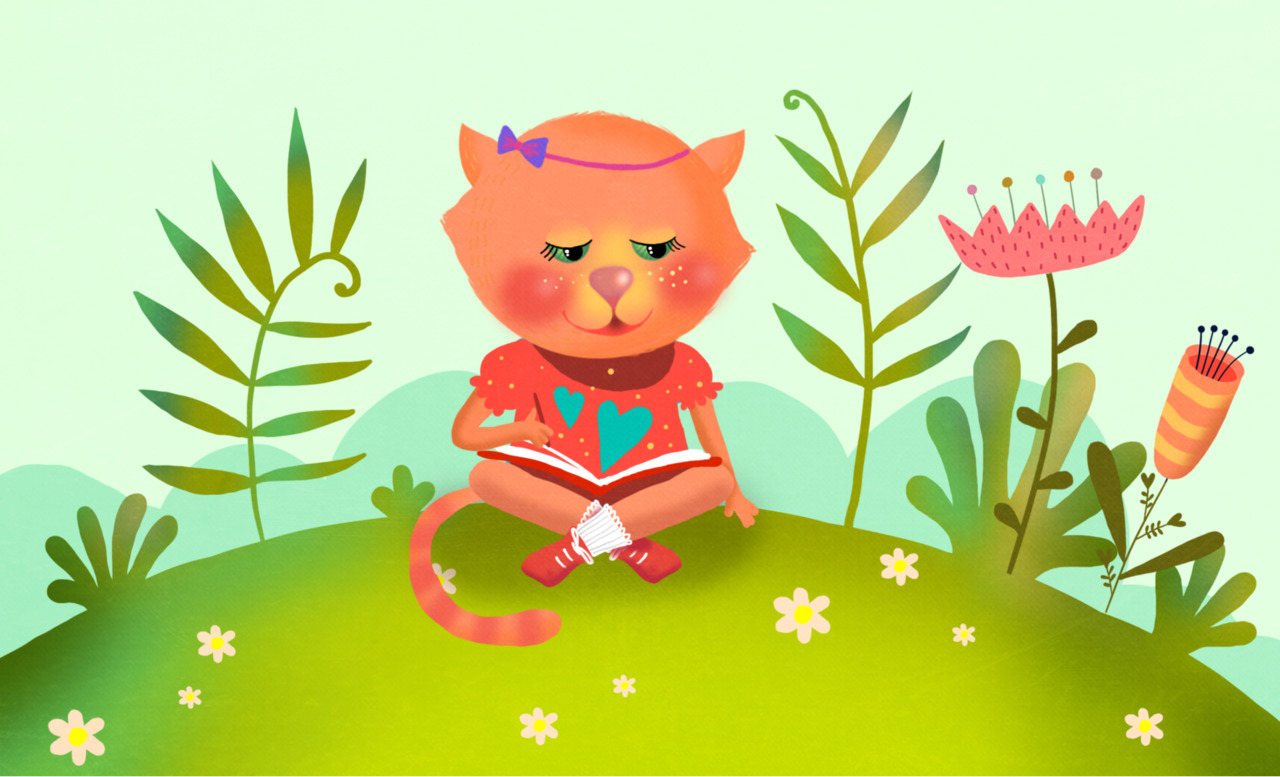
Kids fairy tale “Alice the Cat and the World of Emotions”
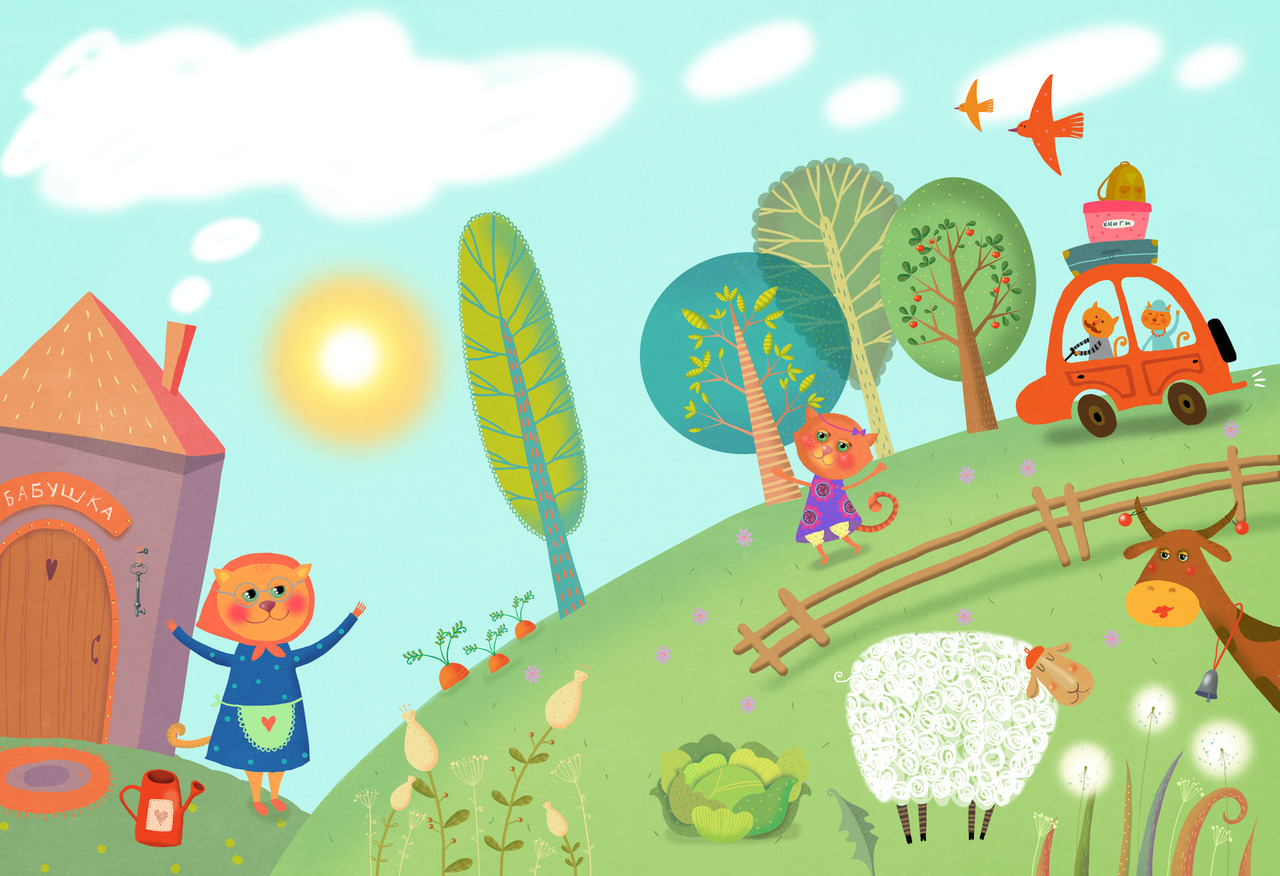
Alice the Cat had a grandmother called Granny Masha. Every year, at the very start of summer, Alice would go to spend the holidays with Granny in her little country house. Granny Masha’s house was right next to a forest and her windows looked out onto a big, green meadow, where lots of sheep and cows liked to graze.
It was the ideal spot to spend the summer holidays. All day, Alice could play outside in the meadow, see her friends, and go for walks in the forest.
Every day, Alice set out to find something new and exciting to put in her Book of Impressions. The book was specially for writing down the most fun events of each day. That way, Alice knew she wouldn’t forget them.
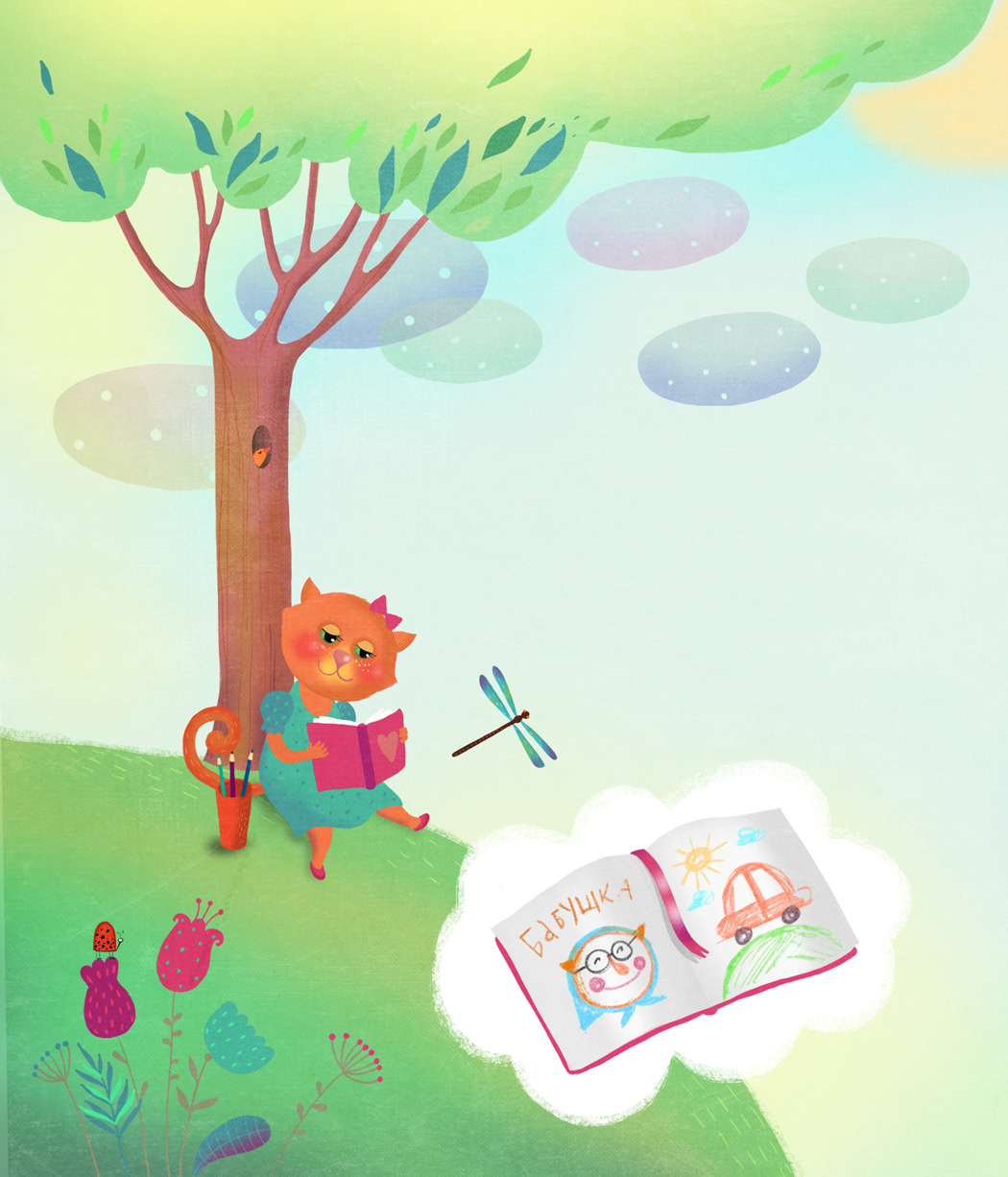
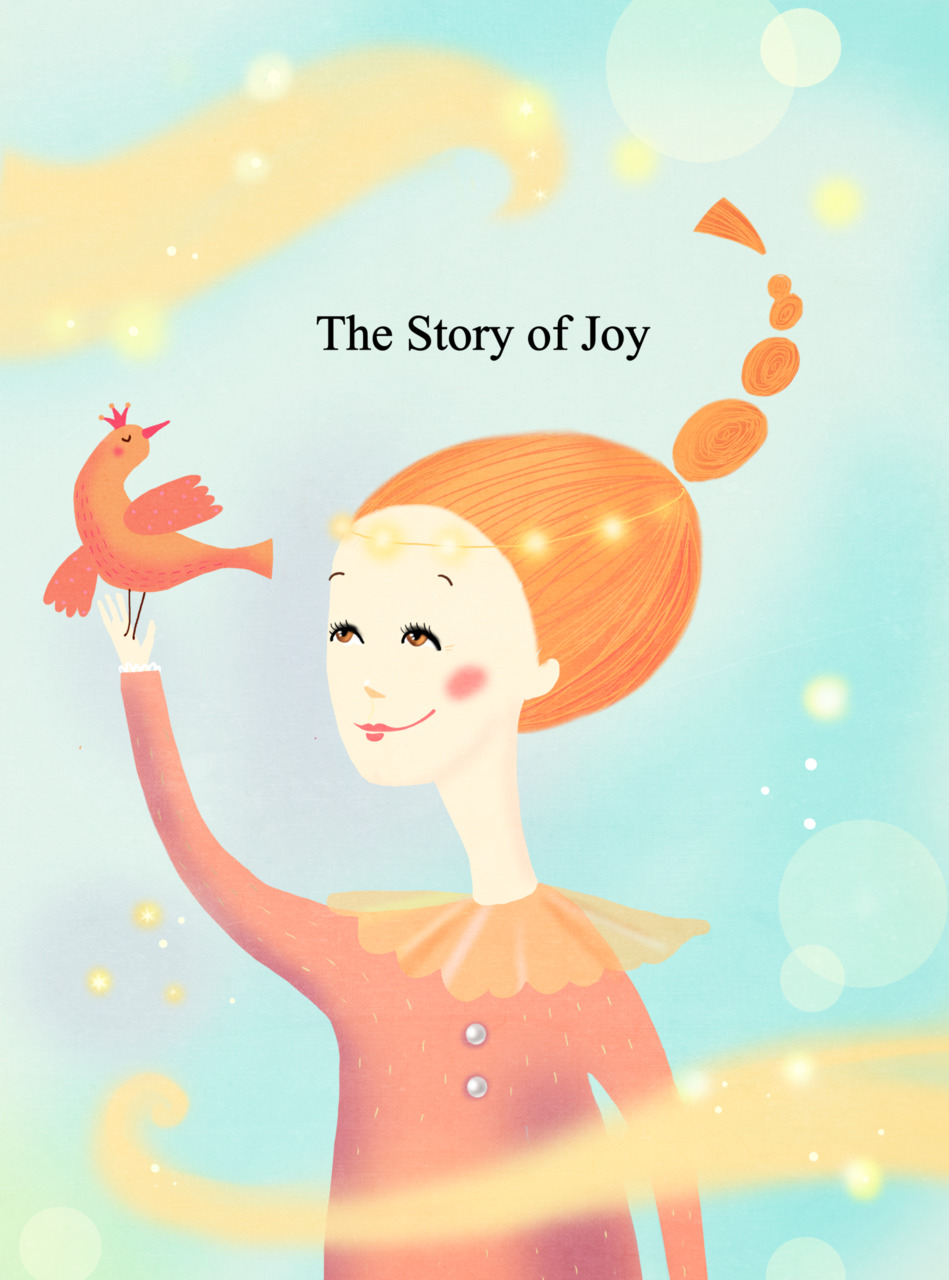
The Story of Joy
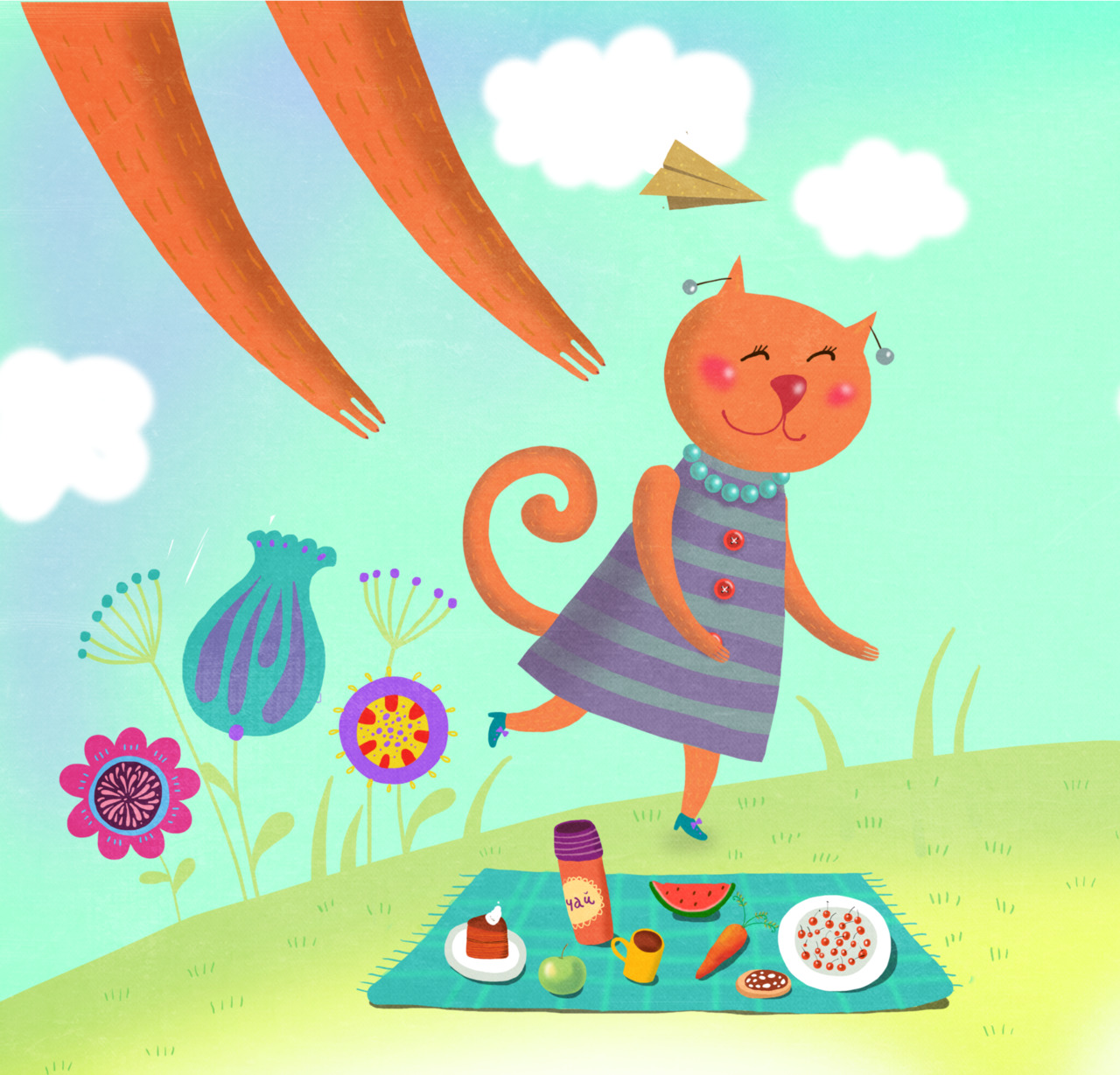
One weekend, Alice’s parents came to stay. All together, they made themselves a picnic, and went down to the lake.
Alice loved spending time with her parents. Her father was so good at thinking up exciting and jolly games, and her mother told the best stories. Down by the lake, they played “tag” and ran around laughing and chasing each other, sometimes stopping to collapse for a rest.
All of a sudden, Alice saw Joy appear.
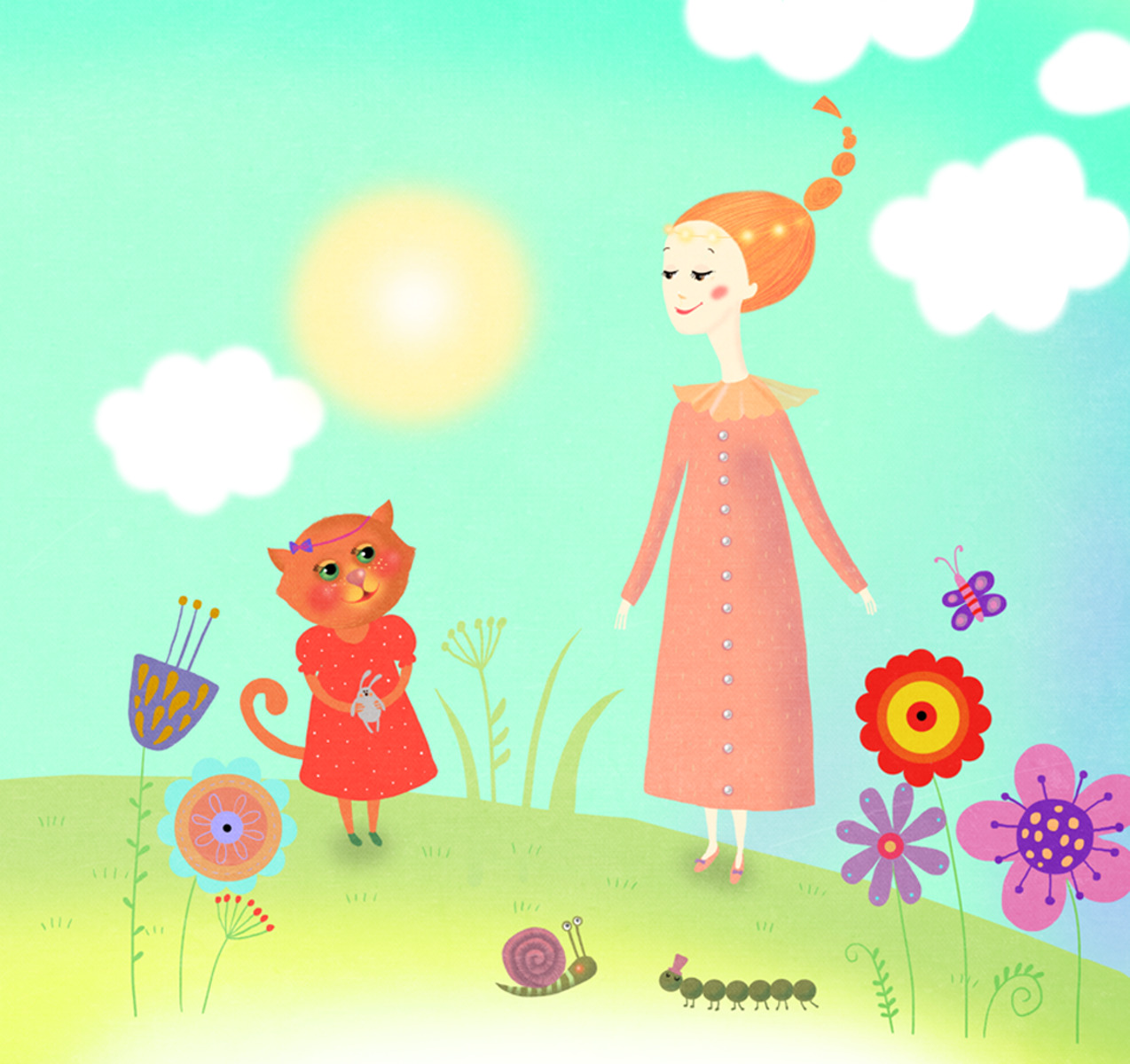
“Hello Alice! Your laugh was so infectious and you seemed so perfectly happy that I just had to come and meet you! My name is Joy. I always appear where there is laughter and merriment. Even if it’s just a tiny smile!”
“Hello Joy,” Alice said. “What will you do here?”
“I’ve come so that you remember this happy day, and the memory of it can comfort you if you should ever feel sad.”
Joy walked up to Alice and gave her a big hug.
“Have you noticed that when I appear, you start to smile? Your eyes go all shiny, and little creases appear by the corners of your eyes, like tiny rays of sunshine!”
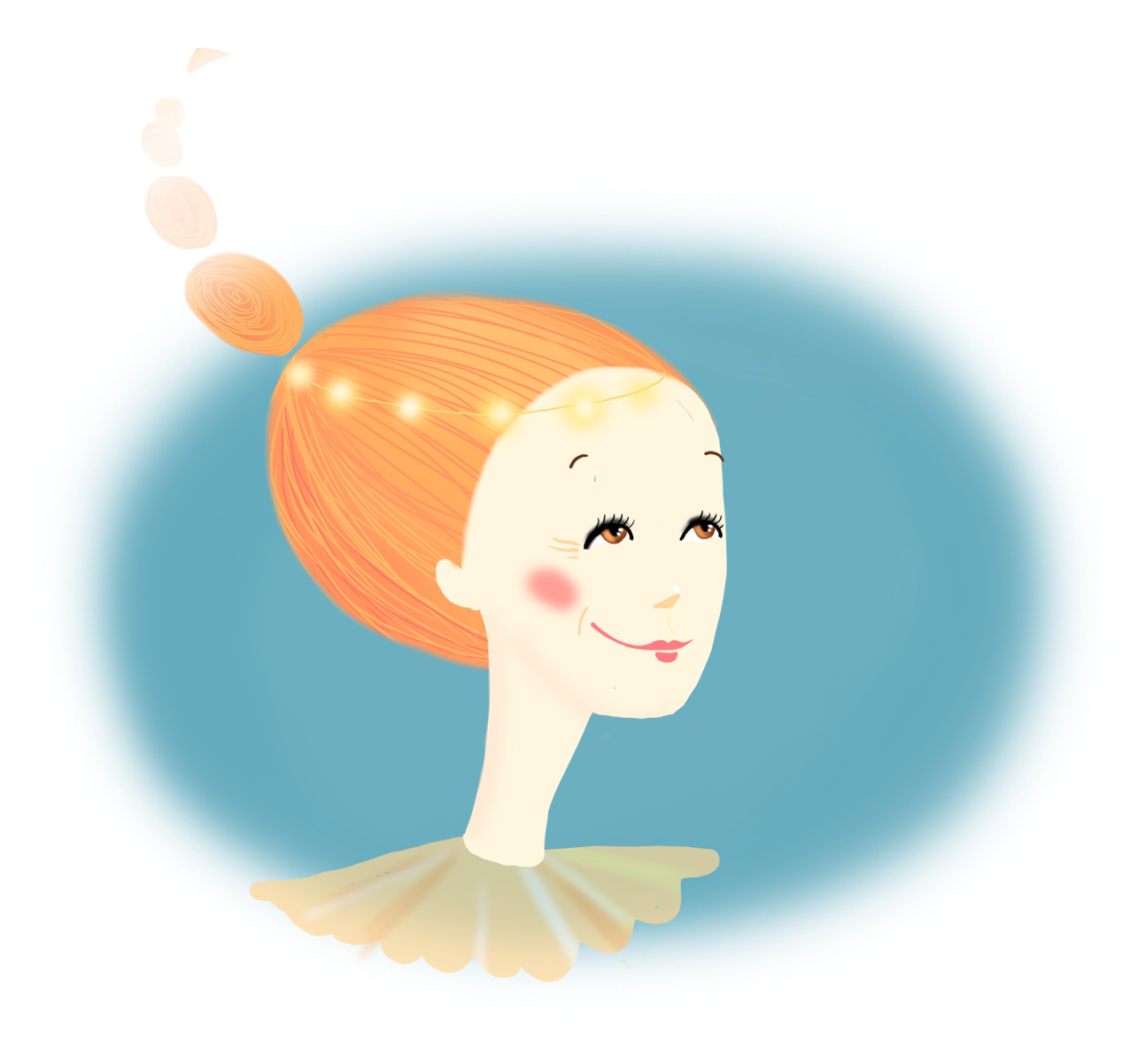
“Oh Joy, I’m so happy I met you!” Alice exclaimed. “I’ll definitely put this day in my Book of Impressions.”
Alice picked a flower from the meadow where she and her father had played tag, and drew a picture of Mother and Granny laughing together. She also drew Joy, smiling.
“Now these memories will always be with me,” she whispered.
And that was how Alice the Cat met Joy.
Бесплатный фрагмент закончился.
Купите книгу, чтобы продолжить чтение.
